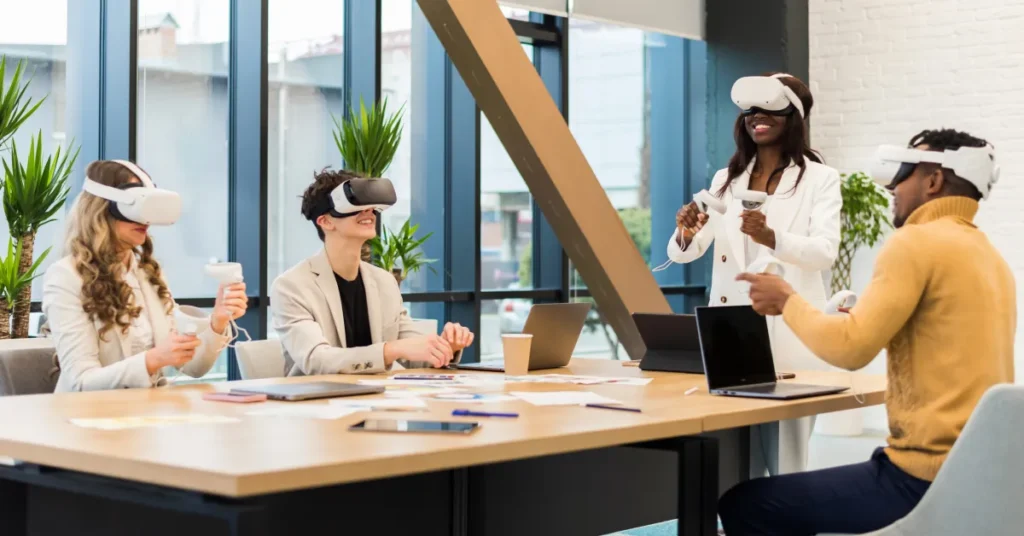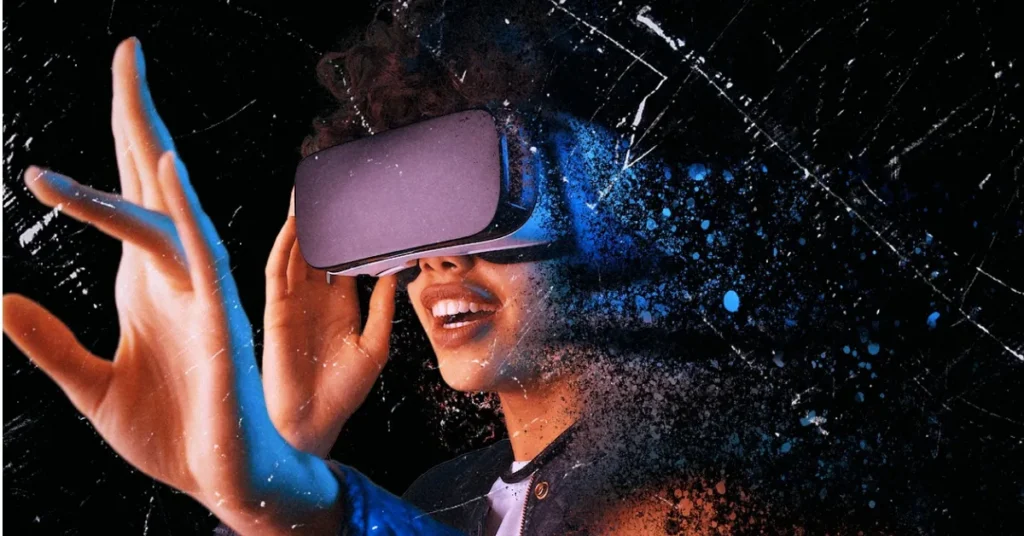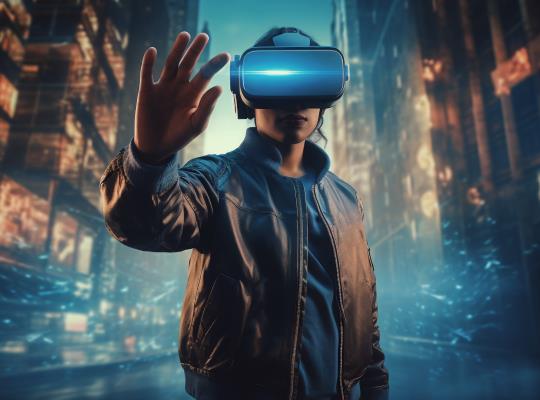When people ask about types of virtual reality with examples, they are usually seeking clarity on the forms that virtual reality (VR) takes in real-world use. Virtual reality, by its very nature, is not a single technology but a spectrum of immersive experiences that differ in scale, interaction, and depth.
This article is a comprehensive guide that explores the different types of virtual reality, showing how each type functions, what makes it unique, and presenting examples that bring theory to life. We will also highlight how a VR company like Quantile Corp delivers VR solutions that align with these varied categories.
Table of Contents
Understanding the Need to Categorize Types of Virtual Reality
Before we examine the different types of virtual reality, it’s important to recognize why categorization matters. Virtual reality can range from basic 360-degree videos to fully immersive environments where users interact with digital objects in real time. Without classification, the phrase “virtual reality” becomes too vague.
Thus, when people ask about the types of virtual reality with examples, they are essentially asking:
- How immersive is the VR experience?
- What technology does it require?
- How does the interaction between user and environment work?
The types of virtual reality help us measure these differences and map out VR’s expanding possibilities.
Non-Immersive Virtual Reality
Among the different types of virtual reality, the most basic is non-immersive VR.
What It Means
In this form, the user remains aware of the physical environment while interacting with a digital space on a computer or device. The immersion is limited, but the engagement is still real.
Example
- A 3D architectural walkthrough on a desktop screen.
- Flight simulators where the user controls via keyboard or joystick, not a headset.
Why It Matters
Although non-immersive, this type of virtual reality is widespread in training, education, and entertainment. It’s accessible, cost-effective, and doesn’t demand specialized VR headsets.
For a VR company like Quantile Corp, providing VR solutions in this category helps industries introduce virtual reality at scale without heavy investment.
Semi-Immersive Virtual Reality
Another prominent category in the types of virtual reality with examples is semi-immersive VR.

What It Means
Semi-immersive VR offers more engagement than non-immersive VR but doesn’t completely isolate the user from the physical environment. Large projector screens, power walls, and partial headset-based visuals fall into this domain.
Example
- Virtual labs in education where students explore interactive 3D models.
- Military training environments with motion-based simulators.
Why It Matters
This type of virtual reality strikes a balance: deep engagement with digital content while retaining situational awareness. Many training-focused VR solutions developed by Quantile Corp use semi-immersive VR to deliver practical, scalable outcomes.
Fully Immersive Virtual Reality
When people ask about the different types of virtual reality, most imagine fully immersive VR.
What It Means
This type is where the user steps entirely into a virtual environment using headsets, motion sensors, gloves, and sometimes treadmills. Interaction is natural, and the environment feels “real.”
Example
- VR gaming platforms where users walk, touch, and interact with digital objects.
- Medical training modules simulate real surgeries in full immersion.
Why It Matters
Fully immersive VR delivers the highest engagement, making it essential for industries like healthcare, aerospace, and defense. For a VR company like Quantile Corp, this is where VR solutions truly redefine training, design, and operations.
Collaborative Virtual Reality
Another unique category within the types of virtual reality with examples is collaborative VR

What It Means
Here, multiple users interact in the same virtual environment, often across different locations. It combines immersion with connectivity, enabling real-time collaboration.
Example
- Multi-user VR meetings where participants share and edit 3D models.
- Collaborative industrial design sessions where engineers from different regions interact with prototypes simultaneously.
Why It Matters
The manufacturing, education, and healthcare sectors often rely on this type of virtual reality because it enables teamwork without geographical barriers. Quantile Corp has pioneered VR solutions that extend collaborative VR into enterprise workflows, making it a game-changer for global industries.
Web-Based Virtual Reality
A growing branch within the different types of virtual reality is web-based VR.
What It Means
This type allows users to access VR experiences directly through web browsers without specialized software. While not always as immersive, it emphasizes accessibility.
Example
- 360-degree travel tours hosted on websites.
- Virtual museums where visitors explore artifacts online.
Why It Matters
For businesses, this type of virtual reality lowers entry barriers, ensuring that large audiences can engage with VR content easily. Quantile Corp, as a forward-thinking VR company, integrates VR solutions with web-based frameworks to maximize accessibility.
Augmented Virtual Reality (Hybrid VR)
Within the spectrum of types of virtual reality with examples, a hybrid form is augmented virtual reality.

What It Means
This type blends elements of augmented reality (AR) with virtual reality (VR). While fully immersive VR takes users away from the real world, hybrid VR allows elements of the real world to mix with the digital.
Example
- Training scenarios where users see real equipment overlaid with virtual instructions.
- Manufacturing assembly where digital parts are layered into physical views.
Why It Matters
This type of virtual reality ensures that VR isn’t an isolated space but an integrated extension of real-world tasks. Many enterprises rely on VR solutions like these for efficiency. Quantile Corp, as a VR company, develops hybrid models that combine realism with immersive power.
The VR Expert in action – Quantile Corp
It’s one thing to define the different types of virtual reality, but another to implement them effectively. Quantile Corp specialises in the below :
- Provides VR solutions tailored to non-immersive, semi-immersive, and fully immersive needs.
- Their expertise ensures that the types of virtual reality explored above are not just theoretical but deployed for real impact.
- With deep domain knowledge, Quantile Corp builds solutions that integrate collaborative VR, web-based VR, and hybrid VR models into business strategy.
Conclusion – Quantile Corp Excels in VR
Ultimately, Quantile Corp succeeds in Virtual Reality. In all kinds of virtual reality, as in web-based VR, hybrid VR, fully immersive VR, semi-immersive VR, non-immersive VR, and collaborative VR. A different degree of application, interaction, and immersion is represented by each category.
Businesses can determine which kind of virtual reality best suits their requirements by investigating the various varieties. The proper VR model offers quantifiable advantages for training, teamwork, or design. Deploying these VR solutions becomes feasible, scalable, and transformative when done with an experienced VR company like Quantile Corp.
In summary, the virtual reality types that are illustrated are not merely classifications; rather, they are avenues for innovation.



